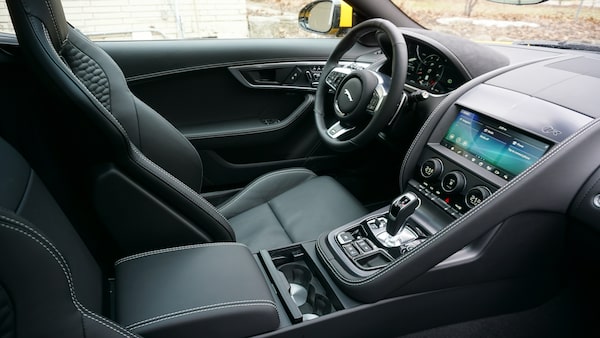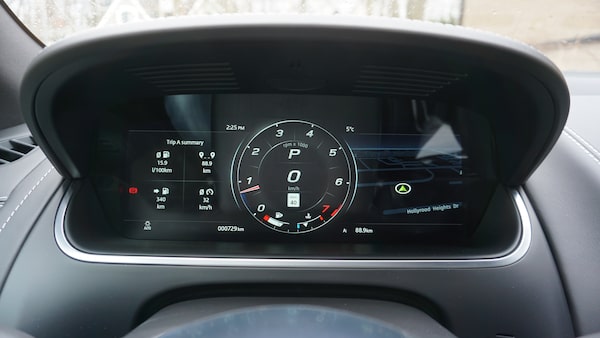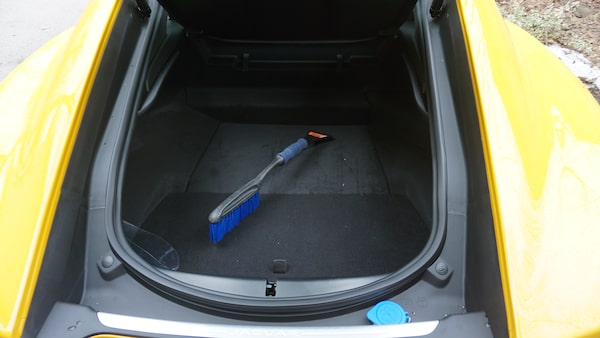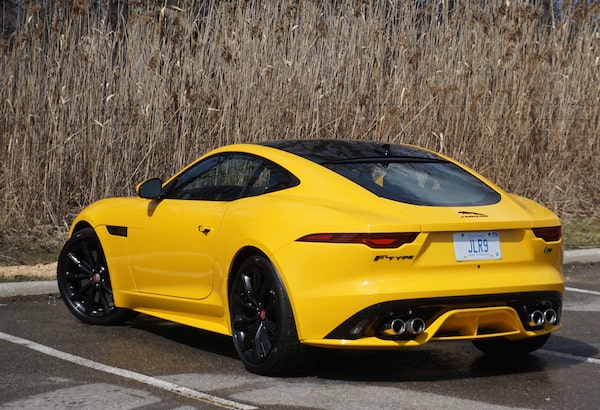
2022 Jaguar F-Type.Jeremy Sinek/The Globe and Mail
The first time I was ever awestruck by a car was when my dad’s friend dropped by to show off his new Jaguar E-Type. There wasn’t anything original about my little-kid reaction.
The voluptuous Jaguar became an international icon. Enzo Ferrari called it the world’s most beautiful car. New York’s Museum of Modern Art has an E-Type roadster in its collection.
Jaguar built other sports cars before the 1961-1973 E-Type, but arguably the only true one since then is the 2013-and-counting F-Type. And now it looks like the F-Type might be Jaguar’s last sports car. By mid-decade, all Jaguars will be electric.
Maybe there’ll be an electric F-Type one day, maybe not, but either way, the question arises: Should diehard petrol-heads grab one of these while they still can?
The F-Type is now sold in Canada only with a five-litre supercharged V8 engine and automatic transmission. Coupe and convertible each start with a 444-horsepower version driving the rear wheels. An R-Dynamic trim adds all-wheel drive to the base engine (our convertible test car), and all-wheel drive is standard on the 575-horsepower R versions (the coupe we tested).

Jeremy Sinek/The Globe and Mail

Interior views of the 2022 Jaguar F-Type.Jeremy Sinek/The Globe and Mail
Let me say right now that, objectively – scientifically-scored-by-nerds-in-white-coats-with-clipboards objective – you can buy “better” sports cars. Then again, define “better.” Cars like the F-Type and rivals like the Porsche 911 exist on such an elevated plane that minor differences in their measurable qualities are nothing compared with how they make you feel.
And let’s not forget value. The F-Type range starts at $87,200 for the 444-horsepower rear-wheel drive coupe and tops out at $124,000 for the 575-horsepower all-wheel drive convertible.
A base 379-horsepower Porsche 911 these days starts at $115,000 and a 573-horsepower 911 Turbo Convertible at $213,000. Only the Corvette at about $72,000, makes the Jaguar look expensive.
The Jaguar has changed little since 2013, so yes, it’s kind of dated. But in a good way. If you’re looking for your last analogue “real car” indulgence to compensate for your future autonomous electric daily driver, there’s much to be said for the F-Type’s good-ol’-fashioned front-engine, rear-drive architecture. Even the all-wheel-drive versions still preserve rear-wheel-drive balance and agility and power-slide potential if you try hard enough.
Plus, it’s supercharged. A five-litre V8 is pretty big to begin with, and the supercharger makes it feel even bigger – at any engine speed. No hurry-up-and-wait for a turbocharger to spool up. Combine that with a slick eight-speed automatic transmission and all-wheel drive and you have a formula for usable performance.
Jaguar claims acceleration to 100 kilometres an hour in times of 4.6 and 3.7 seconds, respectively, for the base and R engines. Sure, some (pricier) Porsches may eviscerate those numbers using launch control at a test track, but try replicating them on the street and keeping your licence. Consider Car and Driver’s zero-to-60 miles an hour track times of 2.8 seconds for a 911 GTS versus 3.5 for the F-Type – a significant gap. But C&D’s “street-start” test from 5 to 60 miles an hour yields the same 3.9 seconds for both cars. That, folks, is the difference between test-track and real-world-usable performance.
Talking about usable, the 911 is justly famous for its daily-driver user-friendliness. But the Jaguar is not bad, especially the coupe. The driving position is pretty normal, and visibility is quite good. Ergonomic factors, often a head-scratcher in British cars, are quite livable.
The F-type is a strict two-seater, but the coupe has useful cargo space under its liftgate, and while the soft-top’s trunk is small and oddly shaped, at least it doesn’t shrink further with the top down.

The coupe has useful cargo space under its liftgate.Jeremy Sinek/The Globe and Mail
With all-wheel drive, you could even drive an F-Type in winter; we experienced a spell of winter’s last gasp in the R Coupe, and even on summer rubber, it was driveable.
The engines are creamy smooth and their sound tracks (even with the pipes in Loud mode) nail a sweet spot between refined and rambunctious.
Driving both coupe and convertible versions did expose my conflicted feelings about convertibles. I do savour the slow-down-and-smell-the-roses experience of driving alfresco, but my alter ego is a gearhead with a taste for track driving.

Jeremy Sinek/The Globe and Mail

2022 Jaguar F-Type convertible.Jeremy Sinek/The Globe and Mail
Convertibles usually suffer a double whammy: Not only is their performance compromised by the weight of reinforcements needed to restore structural rigidity lost when a car has its roof cut off, but they handle loosely because their structure still isn’t stiff enough.
That’s why I usually prefer convertibles in the shape of laid-back cruisers (1966 Cadillac DeVille, anyone?), while hard-core performance cars work better as unopened tin cans.
In the F-Type’s case, however, convertible weight gain is negligible, so there’s no meaningful performance penalty. Despite this, the usual convertible body jelly-wobbles are all but imperceptible. The convertible has no discernible dynamic downside, and it has one upside: a much more supple ride. The R coupe’s stiffer suspension is borderline wince-worthy at times. Yes, the coupe, especially the R, might corner better on a track, but you won’t notice much difference when you’re not racing like a stunt driver.
Still, for my own forever F-Type, neither of Jaguar’s demo cars would be my first choice. I wouldn’t drive my F-Type in winter, so I don’t need all-wheel drive, and deep down, I still prefer rear-drive handling. And if rear-wheel drive limits you to the base engine, well heck, we’re still talking 444 horsepower and a wealth of torque.
That leaves the choice between coupe or convertible. Despite the latter’s dynamic competence, my money – $3,100 less of it – is on the coupe.
I could justify picking the coupe for its cargo volume, but who am I kidding? Just look at it. Parked in my driveway, it would transport me back in time to my first sighting of an E-Type. A daily dose of awestruck.

Jeremy Sinek/The Globe and Mail
Shopping for a new car? Check out the Globe Drive Build and Price Tool to see the latest discounts, rebates and rates on new cars, trucks and SUVs. Click here to get your price.